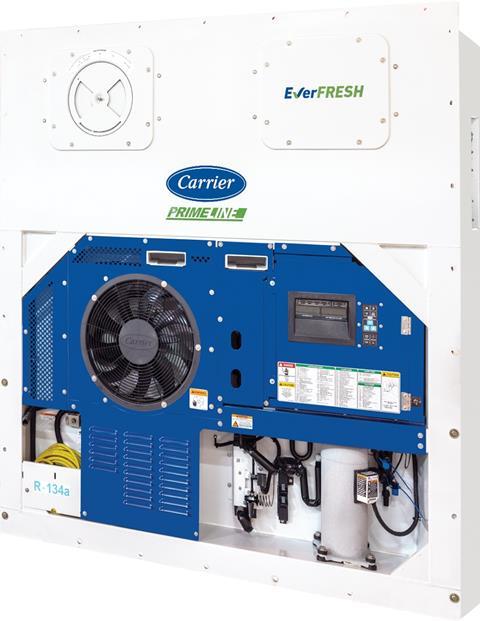With online grocery shopping transforming consumer behaviour, the fresh produce industry is adapting through advanced shipping container atmospheres, innovative packaging, and sustainable logistics solutions
Shopping for groceries online has been a game changer for those with hectic schedules, where squeezing in a supermarket run during the week can feel like an impossible task. Furthermore, online grocery stores offer a wide selection of products with options no longer limited to what is on the shelves of local supermarkets today.
The increased convenience that comes with having groceries delivered right to your doorstep has not only altered consumer behaviour, but it has also triggered changes in cold chain management and the transportation of fresh food.
The direct-to-consumer model has really come to the fore in recent years. The global direct-to-consumer food market is projected to reach US$195bn by 2031. And with such a sizeable opportunity in the making, no wonder there are major developments in technology, which means different trends that are worth watching.
Here, we have picked out the top three trends to note. These are controlled atmospheres in shipping containers, packaging innovations, and carbon-neutral logistics.

Optimal supply chains
The growth of online grocery and meal-kit delivery services demands robust cold chain logistics for home deliveries. For instance, banana exporters are exploring ways to manage the fruit ripening process differently so they ensure freshness and quality when the fruit is delivered directly to homes.
With the ability to monitor and control atmospheres in refrigerated containers – known as reefers – on board vessels, shippers can actively manage the respiration rate of bananas and many other perishable commodities, as well as their ripening processes. And thanks to advancements in sensors and IoT devices in reefers that allow for real-time tracking, shippers can respond quickly to potential issues, thus minimising spoilage.
Predictive analytics and machine learning are also likely to feature more prominently and be used to forecast demand, optimise inventory levels, and predict spoilage risks. For instance, a vision-based sorting system with the help of AI can sort out blueberries multiple times faster and reject unripe fruits with far greater accuracy.
Regional and resilient
Quick deliveries are crucial to fulfil the needs of online grocery shoppers. To reduce transportation distances and emissions, companies will continue to invest in decentralised coldstorage facilities closer to demand centres.
At the same time, we will continue to see a preference for multi-modal transportation with increased use of rail and maritime cold transport to optimise costs and environmental impact over long distances.
A localised or regionalised approach is seen as a risk management strategy, as companies seek to mitigate concentration risk and boost overall resilience. Having a few distribution centres spread out across the areas of highest demand often helps ensure deliveries are made on time, even in periods of disruption.
If tariffs are imposed on certain trades, having a local or regional strategy also mitigates potential supply chain disruptions as it reduces dependency on cross-border imports, while lowering reliance on politically sensitive trade corridors.
With volatility in global trade likely to stay for some time, companies will continue to reconfigure cold supply chains to limit risk of trade disruption, while positioning them closer to the end consumer.
Sustainability
Companies recognise that sustainability is not only desirable from a compliance angle but also makes business sense. And companies in cold supply chains are likely to continue adopting various initiatives to reduce their environmental impact. For one, recyclable packaging will be a preferred option over plastic, leading to increased use of biodegradable and reusable packaging materials.
Coldstorage facilities also incorporate solar panels, wind turbines, and battery storage systems, while integrating energy-efficient technologies like LED lighting and advanced insulation to power operations sustainably and lower operating costs.
To promote carbon neutrality, more companies are adopting electric and hydrogen-powered refrigerated vehicles within their cold supply chains. Meanwhile, container ships are moving away from the use of fossil fuels, with natural gas increasingly adopted and seen as an effective stop-gap solution while the industry explores other renewable energy options. By 2028, 1,154 vessels will be powered by LNG, accounting for 6 per cent of the global fleet, compared with just 21 back in 2010.

Continued evolution
The adoption of advanced cold chain technology will offer greater end-to-end visibility for stakeholders to manage and adapt supply chains dynamically. Meanwhile, implementing technology for real-time tracking will also have a positive effect in waste reduction.
Data shows that around 30 per cent of food produced globally goes to waste, with a sizable portion occurring in the supply chain. Real-time tracking allows for better visibility and control, and a more efficient and sustainable food system.
Moving forward, changing consumer preferences, technology and environmental considerations will lead to shorter cold supply chains and a rethink of cold chain management.
Dr Rob Veltman is associate director product management and global postharvest commercial lead at Carrier Transicold.






